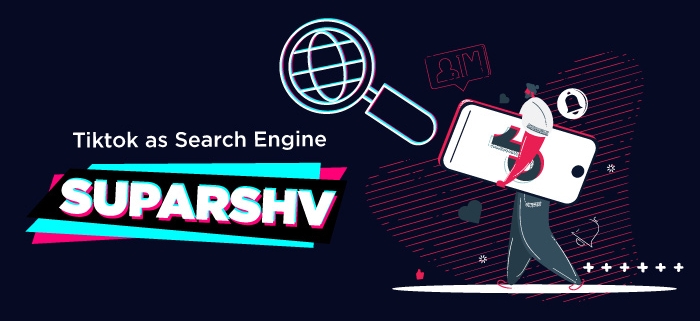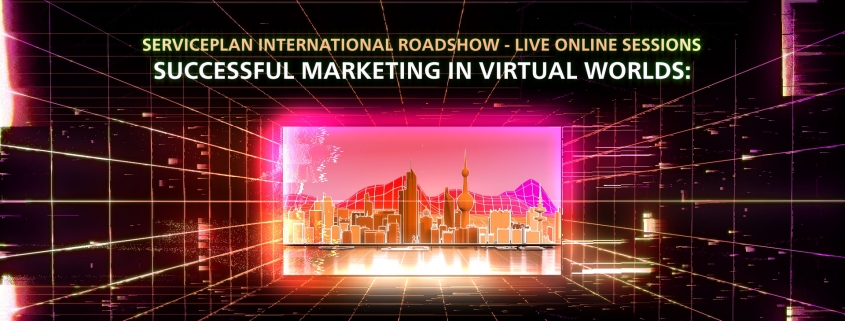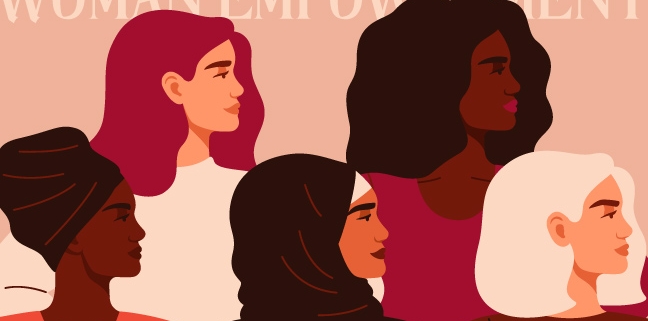a:8:{s:8:”location”;a:1:{i:0;a:1:{i:0;a:3:{s:5:”param”;s:4:”page”;s:8:”operator”;s:2:”==”;s:5:”value”;s:4:”3978″;}}}s:8:”position”;s:6:”normal”;s:5:”style”;s:7:”default”;s:15:”label_placement”;s:3:”top”;s:21:”instruction_placement”;s:5:”label”;s:14:”hide_on_screen”;s:0:””;s:11:”description”;s:0:””;s:12:”show_in_rest”;i:0;}
a:8:{s:8:”location”;a:1:{i:0;a:1:{i:0;a:3:{s:5:”param”;s:4:”page”;s:8:”operator”;s:2:”==”;s:5:”value”;s:4:”4059″;}}}s:8:”position”;s:6:”normal”;s:5:”style”;s:7:”default”;s:15:”label_placement”;s:3:”top”;s:21:”instruction_placement”;s:5:”label”;s:14:”hide_on_screen”;s:0:””;s:11:”description”;s:0:””;s:12:”show_in_rest”;i:0;}
a:8:{s:8:”location”;a:1:{i:0;a:1:{i:0;a:3:{s:5:”param”;s:4:”page”;s:8:”operator”;s:2:”==”;s:5:”value”;s:4:”4059″;}}}s:8:”position”;s:6:”normal”;s:5:”style”;s:7:”default”;s:15:”label_placement”;s:3:”top”;s:21:”instruction_placement”;s:5:”label”;s:14:”hide_on_screen”;s:0:””;s:11:”description”;s:0:””;s:12:”show_in_rest”;i:0;}
a:8:{s:8:”location”;a:1:{i:0;a:1:{i:0;a:3:{s:5:”param”;s:4:”page”;s:8:”operator”;s:2:”==”;s:5:”value”;s:4:”4059″;}}}s:8:”position”;s:6:”normal”;s:5:”style”;s:7:”default”;s:15:”label_placement”;s:3:”top”;s:21:”instruction_placement”;s:5:”label”;s:14:”hide_on_screen”;s:0:””;s:11:”description”;s:0:””;s:12:”show_in_rest”;i:0;}
Suparshv Chopra | Director – Digital Media
Very recently, Google discovered that it is not just YouTube that is facing a threat from popular social media apps like Instagram or TikTok but it’s also their core services such as Google Search & Google Maps that are losing their popularity amongst Gen Z . Based on a recent study conducted by Google, as much as 40% of Gen Z are using these social media platforms as a search engine.
I have penned down my two cents on why this is becoming a growing trend amongst the most sought-after target group and how brands/advertisers can adapt to this changing audience behaviour:
First the why:
As quoted by Prabhakar Raghavan (VP, Google Knowledge & Information Organisation) at Fortune’s Brainstorm Tech conference, “New internet users do not have the expectation and the mindset that we have become accustomed to. The queries they ask are completely different.”
This generation is thriftier than millennials, chooses practicality over customer experience &, most importantly, prefers visual content over plain text.
According to Think with Google, 85% of teenagers within Gen Z use YouTube to regularly find content, while 80% of Gen Z says YouTube videos are very useful in learning new things. This re-emphasises how aggressively Gen Z seeks visual content. Video is becoming their first stop on the path of discovery. Google’s research also highlights that this new generation is turning to social video apps when looking for new places or experiences instead of finding their next destination through Google Maps or Google Search.
Social media platforms not only provide the content Gen Z seeks in their preferred format, but also supports that content with proof points in the form of reviews and feedback from the community they trust in comments or chat sections. In their eyes, this makes it easier and more efficient to make the correct decisions.
Next steps for brands/advertisers:
- Tailor your video content to each platform
- Leverage User Generated Content wherever possible
- Use content creators or influencers to drive higher engagement
- Ride on the current trends quickly and thoughtfully
- Go beyond the marketing messages and produce educational content related to the brand
- Focus on the first few seconds and make them a thumb-stopper
- Have a clear call to action in the end
Brands should also understand other ways they can take advantage of these new trends. Creating and publishing a rich depository of short-form video content should not be restricted to social media platforms. It should also be made available on the brand’s website. This will boost the brand’s SEO efforts as Google announced that they will leverage AI to analyse videos on the web and show users a more rich and visual heavy search results to their queries.
Your target group’s behaviour is changing, are you up for the challenge?
By Abdalla Yousef, Senior Account Manager, Serviceplan Experience
In the age of constant communication, brands are no longer expected to remain silent on issues outside of their perceived scope of expertise. Many of today’s most successful brands take a stand on topics ranging from global warming to political conflicts.
Look at Nike’s “Dream Crazy” advert featuring Colin Kaepernick, which took an unwavering stance on racial justice, or P&G’s commitment to establishing gender equality. How about Ben & Jerry’s clear public position on voting rights, climate justice, and more?
Even though these brands’ products have little to do with the issues they are advocating for, they still choose to use their platform to highlight their brand identity in a way that is grounded in real-world issues. This not only helps raise awareness about these issues, but it also shows their customers who exactly they are and what statement they want their products to be making.
Thinking in the same vein, brands can also use their platform to raise awareness about life-threatening diseases and other important healthcare topics. Any brand, regardless of whether or not they are directly related to the medical field, can choose to raise awareness about or advocate for a particular healthcare concern that they feel passionately about.
How can a brand find the right strategic approach to stepping into healthcare marketing even if their product focus is not in the medical field? A number of brands already use their voice to raise awareness about healthcare issues – showing their customers that they truly care about their wellbeing. There are two key approaches that brands take to healthcare communication.
First, they create their very own healthcare-related campaign, and include experts on the topic to convey accurate information to their target group.
Let’s look at MINI Middle East’s Breast Cancer Awareness Month campaign as a masterclass in how brands, regardless of their products, can help save lives through this first approach. For two weeks during the month of October, MINI Middle East partnered with Dubai-based breast cancer survivor, Dina Aman and invited women to a special test drive with Dina. The women would drive the official test drive car, an unmissable pink MINI with the words ‘Circle around. Look for unusual bumps’ written on the side, around different roundabouts in Dubai. This clever campaign not only reminded women of the life-saving task of checking for early signs of breast cancer, but it also gave them the opportunity to learn about Dina’s experience and how she remained strong in the face of unimaginable adversity. Although on the surface cars have little to do with breast cancer, MINI Middle East exemplified their ethos of Big Love by finding a creative way to keep their audience safe while also promoting their products.
Second, brands collaborate with diverse entities, from business communities to mental health centers, to address pertinent issues their audiences are struggling with.
A perfect illustration of this technique is Dubai Science Park’s ‘Hostages of Depression’ campaign. Serviceplan Middle East collaborated with Dubai Science Park and Thrive Wellbeing, a leading mental health clinic in the U.A.E., to raise awareness about the symptoms of depression and encourage those who are suffering to seek help. With the intention of tackling the stigma against mental illness in the Middle East, the key message of this campaign was that depression is not the fault of the person struggling. For example, oversleeping is one of the clearest signs of chronic depression, and yet over 66% of cases of depression go undiagnosed. As a result, the depressed individual falls further into self-doubt and away from recovery. ‘Hostages of Depression’ aimed to show people that what they may be mistaking for personal flaws could actually be symptoms of a debilitating mental illness and emphasize the importance of seeking help. Though Dubai Science Park, a community for healthcare and business professionals, does not explicitly work on mental health related issues, this campaign aligned with the company commitment to creating lasting, positive change in people’s lives.
The campaigns of MINI Middle East and Dubai Science Park illustrate just two of the many ways your brand can help save lives by supporting the awareness of serious illnesses; by creating your very own healthcare-related campaign or by collaborating with diverse entities to address pertinent issues These campaigns also showcase how brands can go about saving lives: by running an awareness campaign about a specific illness, more people will become aware of the disease, which may in turn lead to patients getting diagnosed and treated more quickly and accurately.
Both approaches clearly demonstrate that brands don’t have to be limited to the confines of their products and how their goods can add value to people’s lives; there are a myriad of opportunities for brands to showcase that they truly care about their customers’ wellbeing, beyond sales and profits. Nevertheless, a campaign that focuses on something else other than the brand’s profitability can simultaneously increase your customer loyalty, the positive reputation of your brand amongst both your target group and potential new audiences, and support from the general public for your brand.
We encourage your brand to seize these opportunities and either start or continue spreading awareness about healthcare topics that will change the course of people’s lives for the better.
Connecting the real and virtual worlds, the metaverse is set to be the next big challenge for marketers. Gaming and e-sports are the drivers of a whole new entertainment industry.
When Facebook founder Mark Zuckerberg announced that the new name of his company was Meta, it was a huge clue to the internet’s next stage of evolution: the metaverse as the next iteration of the World Wide Web as we knew it. After all, virtual and physical worlds are increasingly converging and constantly creating new digital spaces. And one of the main drivers of this are games and the digital world of sports . So, it was only logical that the latest “International Roadshow” by the Serviceplan Group was dedicated to “Mythbusting the Metaverse” – with a particular focus on e-sports and gaming.
People are spending more and more time online, as Eva Simone Lihotzky, Director Group Corporate Strategy Serviceplan Group, is observing. While it was just 7 percent of their day in 2010, it is now around 38 percent – and will soon be 50 percent. “The pandemic has certainly fueled this development, but the third web is already very present. Virtual worlds are becoming mainstream.”
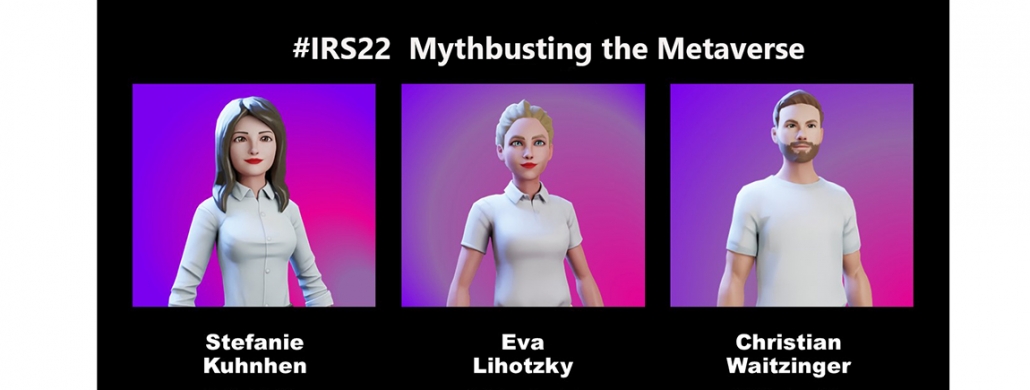
Virtual spaces are now more creative and social
Online gaming platforms like Roblox, where the users invent their own computer games and can play them with others, are proving a huge hit. Like the team-based strategy game League of Legends, which is played by hundreds of millions of players every month and is constantly being developed. “Virtual worlds are becoming more creative and spatial,” Lihotzky says. “And they are also adapting themselves to users’ needs. This consistency is what makes them lasting companions and therefore also so interesting for the brand economy.”
We are currently “in the early stages of a new technology that has outgrown its hype status,” says Stefanie Kuhnhen, Chief Strategy Officer at the Serviceplan Group. In her view, a “learning community” is currently emerging and it is important to now get a foot in the door. “We shouldn’t just be thinking in single platforms anymore. There are lots of different metaverses that are emerging: open and decentralised, no longer just accessible with AR glasses, but more and more browser-based and mobile.” And the focus is not so much on creating 3D-rooms per se, but on creating exiting experiences and hence time that consumers want to spend with a brand. The “15 minutes that a user is spending in branded spaces or new communities can be worth more than the six seconds that they spend looking at an Instagram ad.”
Marketing is reinventing itself in the metaverse
Marketers need to face up to the metaverse in all its complexity. It is a gigantic space for playing, creating things, connecting with others and working, but also for processing transactions, consuming and even earning money. Online gamers and e-sports players are icons of youth culture and influencers in one. Something that hardly seemed conceivable to older generations is now becoming a reality: while the whole family used to sit down to watch TV together for an evening, young people are now tuning into Twitch to watch other online gamers play.
“In the USA, more kids play Fortnite than football and basketball combined,” says Christian Waitzinger, Chief Experience Officer Plan.Net Group, giving us a good idea of the dimensions. In his point of view, the convergence of the digital and physical lifestyle is already fully underway. Brands like Liverpool F.C. have a shop on Roblox, Chipotle has launched the Burrito Builder there and fashion brands like Gucci are also gradually making a foray into the worlds where young people can be found today. It all comes down to being in the place where your future customers spend the most time. And for Waitzinger, it is extremely exciting to see how more and more new business models are emerging from this and brands are rethinking their understanding of consumers.
Gaming is taking over from TV
Gaming has become more unifying across national borders than almost anything else. “Gaming is a sympathy multiplier,” says Alexander Turtschan, Director Digital Accelerator the Mediaplus Group. “E-sports arenas are the new movie theatres.” A way to lose yourself in stories, compete with others and keep on improving. “We see ecosystems emerging here. You can even become a superstar yourself and earn a lot of money. That’s why, e-sports are a serious contender for traditional sports in terms of marketing or sponsorship.” Here you can find everything that the marketer’s heart desires: attractive target groups, influencers, strong communities and, last but not least, the perfect gateway into youth culture.
The advertising industry is merging more and more into these new worlds and its focus now is to create meaningful engagement of lasting value. Nevertheless, “brands should still stick to their values,” believes Helmi Abdalhadi, Manager of House of Gaming at the House of Communication Dubai. He sees gamers as being very critical and professional and, as a result, the only way to reach them is with authenticity. “So, brands that engage with this target group always need to give something back, really embrace the culture and build up something from scratch. We definitely see a new media genre emerging here.
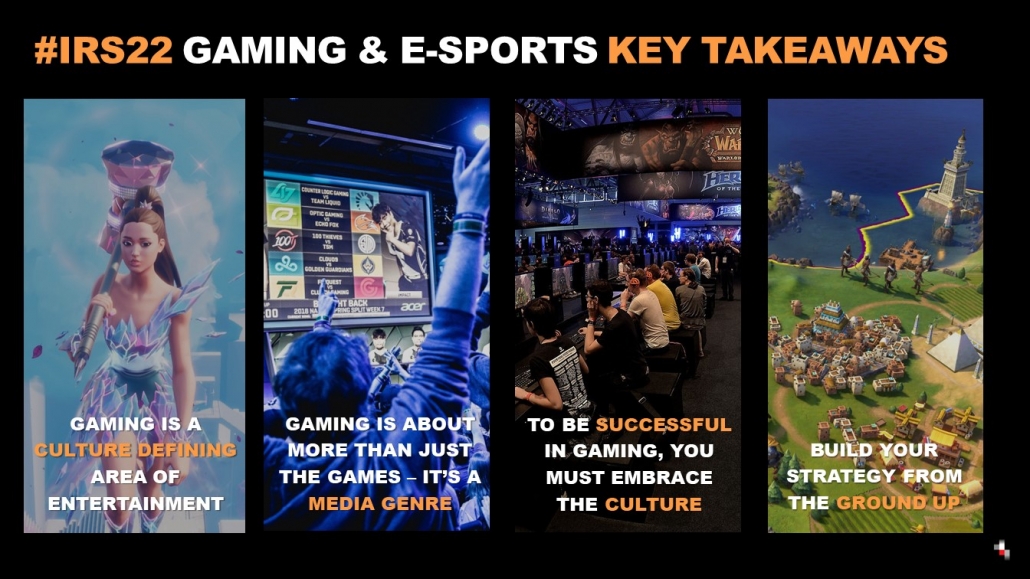
Brands are leading the way in brandification
More and more brands are recognising the momentum of this global movement and are aligning their gaming and e-sports strategies accordingly. “We realised that there are overlaps with our own fundamental brand strategy,” says Pia Schörner, Head of Gaming and Sponsoring at BMW Group. “Joy” or “thrills” are the perfect fit for what the BMW world refers to as its core. So, two and a half years ago, the Munich-based company began making their brand “future-proof for the younger target groups.”
Above all, it was about generating the maximum impact in what Schörner calls “the fastest growing segment of the entertainment industry”. They achieved this with partnerships with the six best e-sports teams in the world, as well as the development of unique formats such as ‘Brawls’, where well-known e-sports players compete against each other. Schörner believes that it’s very important to not just stubbornly throw in product placements, as so many brands do. “For us, it’s about being relevant.” Brandification is the magic word here.
Authentic advertising instead of mere selling
Markus Weiß, Director of Corporate Affairs & Company Spokesperson at McDonald’s Germany, is taking a similar approach. He admits that “McDonald’s isn’t the first brand that springs to mind when talking about something like e-sports”, but they have developed an approach for the new virtual worlds that is valuable and beneficial and goes beyond merely wanting to sell. “As a brand, we want to be an everyday companion that also gives something back and who is as just as passionate as our target group.”
Entering into a partnership with tournament organisers ESL, the world’s leading e-sports company, was not just a first step but is an important pillar of its gaming engagement until today. McDonald’s is meanwhile active at Gamescom, the world’s biggest trade show for video games, and is launching attention-grabbing promotions like the Twitch Sub Bombs (one-off subscription gifts): in this format, which saw them team up with well-known player collective PietSmiet, the burger giant surprised small content creators (micro-streamers) with a ‘gift’. Those watching the PietSmiet broadcast were encouraged to visit the micro-streamers’ pages – sending their total viewing numbers from the low double-digits into the thousands and therefore supporting the micro-streamers financially. “Whenever possible, we rather integrate the brand in a playful way, combined with our messages, instead of playing classic commercials”, explains Weiß. “Our ethos is: brand love meets brand trust.”
Missed the IRS22? If you’d like to watch one of the sessions, the videos are available on our website
For too long, human beings have focused on computational power and have been obsessed with the power of the mind, says Azhar Siddiqui. Here he explains, why we need to turn to our emotions, feelings and intuition to achieve a higher form of intelligence – and a human driven future.
Over the last 20 years we have witnessed almost all labour-intensive jobs move from human hands to robots or other complex machines. In the last five years, machines are being used to perform complex intelligence based tasks in areas of medicine, research, space exploration, quantum physics, climate change, infrastructure development and in almost all other areas outpacing human capacity to process information. Human progress today is almost completely dependent on machines. Without the internet which is the machine network, we will stop functioning as a modern society.
Now here’s the interesting part: With this exponential growth of machine power, it is predicted that somewhere between 2030 and 2045, the neural networks in machines will be able to compute and process more data and at higher speeds than the neural networks in the human brain – an event known as technological singularity. Simply put, machines will outthink and outsmart human beings creating a more intelligent being per se. Artificial Intelligence will be more intelligent than human intelligence.

What happens then is the subject of many debates with one side stating that machines will take over the world and another side who believe that machines will collaborate with human beings and accelerate human evolution further. So what is the future going to be like? Should we be scared and stop creating more intelligent machines that will eventually outsmart us and possibly make us their slaves? If we are to evaluate the scenario purely on the computation power or processing speed, then there is no doubt that at some point we will have to submit our dominant position to a more intelligent machine system – known as Artificial Intelligence.
But, I am not threatened by the this predicament. For the name artificial itself means its not real. Human intelligence should not be evaluated only as computational intelligence based on the processing power of the brain. For humans can do so much more than just process information or compute. Humans can feel, humans can connect, humans can sense, humans can empathize. We have emotions and a unique sense called intuition. The problem is that we do not know how to tap into these emotions and the bigger problem is that we have programmed ourselves not to trust our intuition. We have been relying so heavily on our brain and focusing so much on the ability to algorithmically understand everything around us that we have forgotten how to feel and how to connect with the world around us.
Human’s understood the mysteries of the universe long before the laws of gravity and physics were defined. The theories of the universe that we are revealing today are not a revelation, but rather a confirmation of what was already understood thousands of years ago by men and women who we call philosophers, oracles, saints or prophets. Where did their answers come from in an age where no computer or microchip existed? Clearly humans felt and connected not just through their minds but through other means. Maybe the answers came to them through thoughtful meditation and introspection. Maybe we simply listened more our feelings and were more in touch with our intuition. We knew how to balance the understanding of our universe between computational thinking, emotional thinking and intuitive thinking?
Perhaps this is the greatest power of being human: To really understand and trust out gut as they say. Feelings that we cannot compute in 0s and 1s but feelings that still give us answers to so many questions that are mathematically impossible to equate.
Today, we fear that we may no longer be the most intelligent life on earth because the machines we built will compute faster than us. But that’s just one part of who we are what we can do for the machines can’t feel or imagine. In the future, machines will do exactly what they are built to do – process information. And hopefully, humans will learn to escalate to a higher form of intelligence. We will better understand the universe and our place in it. After all this is what being human is all about.
But this is not going to be an easy journey and there is a real danger that if do not consciously put a real effort into this evolution, we very well may end up living one of the Hollywood movies where we become slaves to our machines. We continue to place more and more emphasis on sciences, finance, production, data processing and in doing so we are becoming more machine and less human ourselves. We equate success with machine like productivity and evaluate progress through the equation of output of goods and services that have material or monetary value. We need to stop this obsession and learn how to balance it better with our humanness. This is not going to come automatically for this requires us to learn the techniques and put in hard work and commitment required to understand our own humanness first. It will require the investment of our time, and our time right now is disproportionately skewed towards computing the whole universe in equations of IF and THEN. We need to change this obsession with the computational power and algorithmic logic and learn to trust the fact that there is another way for human evolution.
We need a time-out. There is an urgent need to collectively as a human race have a greater understanding and appreciation for art, music, spirituality, humanity, and everything else that is not materialistic in value. We need to formulate more policies in our personal lives, in our businesses and in our governments not just for ourselves but for our entire planet. We need to accept that we are part of a macro ecosystem known as planet earth and we cannot simply use and abuse our planet in the ways we have been doing. We need to celebrate heroes who do good things versus only celebrate heroes who do things that make money. Our evaluation of life overall needs to be redefined from the never-ending chase of materialism to a higher cause of self-realization. Our current obsession is turning us into machines and if we try to compete with Artificial Intelligence by become machines, we will certainly fail. This is proven by the theory of technological singularity.
But my hope lies in the fact that we are not machines, we are humans. We are not artificial, we are real. We can feel, we can sense and we can connect with each other and with the world around us in more than just one way. We are meant to have a higher purpose and perhaps it is the threat of something artificial that will push us to realize our true potential.
So how do we counter the threat of artificial intelligence – just be more human!
Will the blockchain enhance the digital media landscape and if so, what are the barriers?
By looking at the fundamentals of the blockchain technology and projecting them onto the principles of the digital media landscape, we begin to notice a common ground but with different terminology that creates a range of opportunities for those of wants.
In this article, we will project the blockchain infrastructure onto programmatic advertising, click fraud, and metrics reporting.
I assume by now, most of you are familiar with what the blockchain is, but for those who are still confused by this fancy term, I will try to explain it using a simple comparison:
IS BLOCKCHAIN A DATABASE (DB)?
Quick answer, no. Although they have a lot in common, they are completely different, and I will cover the why and how in this section.
From an architectural standpoint, DB is based on a client server methodology, where the client is the node or the user accessing the DB, and the server is the centralized node that, for simplicity’s sake, we are going to say is where the DB is hosted. On the other hand, blockchain is based on a distributed network that is interconnected through a node-to-node or peer-to-peer methodology. When a transaction occurs, Blockchain uses a consensus algorithm, which is called proof-of-work, to validate and then store or transfer through read and write operations only.DB is completely centralized, which means that a DB manager or operator has full control over the DB, and one user with access can create, read, update, and delete data. So, in one word, blockchain ensures transparency, which leads us into the next section of this article.
TRANSPARENCY
With the rise of click fraud, chaotic targeting, and limited budgets, advertisers are seeking various ways to protect their media spend and to maximize efficiency. Transparency is what they need to ensure all of the above.
Imagine company X is launching an awareness campaign where the media plan includes Display ads, Video Ads, Audio Ads, Native Ads, Proximity Ads, and many more.
In a traditional ecosystem, reporting will take place manually or in real-time (a fancy term), but the data is published manually or through data parsing from a third-party supplier.
How can company X ensure that their campaign reached the right audience, at the right time, in the right location and that the report in hand reflects the right views and right clicks actioned by the right audience and not by bots?
Blockchain technology ensures transparency in the whole digital landscape through multiple applications from click fraud detection, fake traffic, and domain spoofing to precise tracking and ad buying.
Thanks to the Proof-of-View and the likes of PoV technology that are sitting on the blockchain, advertisers can now ensure that the result in hand reflects what their content and pages really got, which will lead to efficiency. It can also track where and how their ads have been placed, which will enhance the reporting process and offer an accurate optimization.
Similarly, blockchain is offering an evolution in the media supply-chain – a chain that is interconnected by a middleman throughout.
Agencies, DSPs, Ad Exchanges, SSPs and publishers are all running their own ledgers and this is only because data is the main product in media, and every entity wants to keep the accessibility and the processing of this data within closed doors, which is centralization at its best.
Obviously, the main loser in this is the advertiser. However, from an effectiveness point of view, the healthy media supply chain should be backed by the blockchain where advertisers, agencies, DSPs, Ad-exchanges, SSPs, and publishers are forming this network and working on a shared ledger to authenticate, validate, and exchange.

This will provide all entities the ability to agree on every single transaction, to know where the metrics are coming from and how they are changing over time, and finally, to approve and validate the authenticity of the delivery, which can trigger the automated payments, and all will be governed by smart contracts.
The opportunities are limitless, but like any tech-evolution, obstacles will pop up – creating adoption barriers where some are systematic and others are technical. Here are a few just for clarity:
- Speed of transaction and validation (that is why it is recommended to not transform the whole supply-chain, but rather transform the crucial parts that require validation and authentication).
- Data is the product and once it becomes decentralized, companies fear losing control and IP.
- Conflict of interest: blockchain imposes a necessity for different players, even competitors, to collaborate.
- Competition within the one industry: the fact that all parties are being exposed in a decentralized system creates a challenge, especially between the competitors whose main goal is to own the bigger share of that pie (Advertiser).
- And much more…
Blockchain will create an evolution in the media world by forcing transparency, accuracy, and authenticity, but the main question remains: when will we see a mass adoption within the industry? In my opinion, we’re still far from it, but for most of you who are struggling with the “How?” my advice is to forget about the how and to focus on the why and the what.
The how starts like any transformation – with requirement gathering – and goes into the normal transformation lifecycle, and there’re plenty of good players who can support on this.
‘Carpenter.’ That was my genuine, enthusiastic answer to the classic question that every elementary school student is asked, but it was always met by laughter from the teacher, as if I was telling a joke. I went home to my mom, who explained how the profession I chose was unsuitable for women, and only men could do such work.
I am fairly certain there are countless stories like mine. Many girls dream of being boxers, rally drivers, electricians, automotive mechanics, and many other ‘untraditional’ professions. But they can’t do more than dream because it’s against society’s norms.
With time and openness to greater possibilities, things improved regarding gender equality in the Arab region. Yet, studies show a gap between female labour force participation rates and that of males in certain professions, and this gender gap leads to many talents and opportunities being lost.
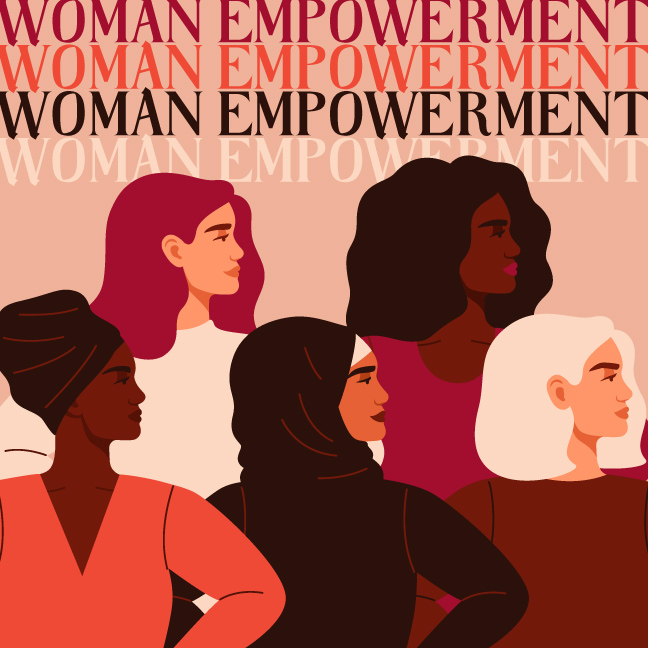
UN WOMEN for gender equality and female empowerment wanted to launch an awareness campaign, encouraging society to break the perception that women can’t work in any profession they choose.
Thinking of it from a creative design perspective, the insight was how the male form takes over the inclusive speech in the Arabic language, especially in job ads.
For example, the usual form is DOCTOR WANTED- Doctor is used in male form, although the ad is directed at both men and women.
From here, as a global team from the House of Communication in Munich and Dubai, we wanted to create a symbol and add it to every male-formed job title in job ads. People will then see these teaser ads LinkedIn to certain platforms where we have our full campaign communication.
To promote women’s economic empowerment in the Arab states, UN Women organized a webinar on the role of media and advertising. Together with my colleague Natalie Shardan, MD of Serviceplan, I had the chance to talk about the ALL-GENDER campaign, discuss the situation of gender equality at work, and state our take on gender inequalities:
“Jobs have no gender, so why should job advertisements address only half of the population? With our latest campaign, we want to highlight that inclusiveness should be promoted in the workplace from the recruitment phase.”
UN Women Arabic | Twitter
The discussed topics and information were up-and-coming in terms of supporting women at work by many media entities in the Arab region. And obviously, there is a massive interest in highlighting inclusivity as much as possible. The campaign is still in its first phase. The next challenge is to get as many entities as possible to adopt this symbol and use it in their job ads. To make this process even easier for everyone, we created an All-Gender font that can be easily downloaded and used. Seeing the emblem online will prove that this initiative succeeded in revealing that jobs like truck driver, carpenter, firefighter, or even CEO are not male-exclusive anymore.
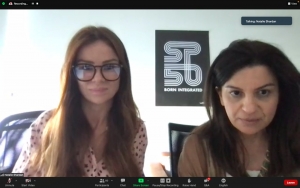
This is just the beginning of something big. Together with UN WOMEN, more milestones can be expected, such as the release of a powerful manifesto and the collaboration with influencers for targeted editorials. With all of that, we want to encourage girls and boys alike to actually start their professional lives in whatever direction they are dreaming of.
While still pursuing the carpentry profession on a smaller scale with starting my own handiwork projects at home, I am more than grateful to contribute, as part of the Serviceplan Group team, to the global issue of diversity and inclusion. Through our work, every day we see how bringing together diverging mindsets, skills, and cultural imprints in one common project is by far the most effective way of fostering true creativity and enabling major breakthroughs. We want to share this spirit of “Strength by Diversity“, with our clients, as we strongly believe that respecting every human-being, overcoming all forms of systematic exclusion, and unlocking the full potential of every talent gives companies and individuals the inner strength, resilience, and innovative energy it takes to overcome the challenges of highly globalized, rapidly changing markets and local issues.
Together with UN WOMEN and the ALL-GENDER-SIGN, we are fighting for our shared mission of making this world we live in an equal, diversified one – starting with a girl’s dream profession and her teacher’s encouraging reaction to it.
"Jobs have no gender so why should job advertisements address only half of the population? With our latest campaign, we want to highlight that inclusiveness should be promoted in the workplace from the recruitment phase."
— UN Women Arabic (@unwomenarabic) March 17, 2022
– Rana Ahmed / Natalie Shardan, @ServiceplanME #AFSD2022 pic.twitter.com/4O7508Y0ML
Author: Rana Ahmad, Senior Copywriter Serviceplan Experience
NEW CONTENT
TOP AUTHORS
- Serviceplan Group (39)
- Twelve (38)
- Florian Haller (37)
- Stephan Kopp (32)
- Alexander Turtschan (22)


